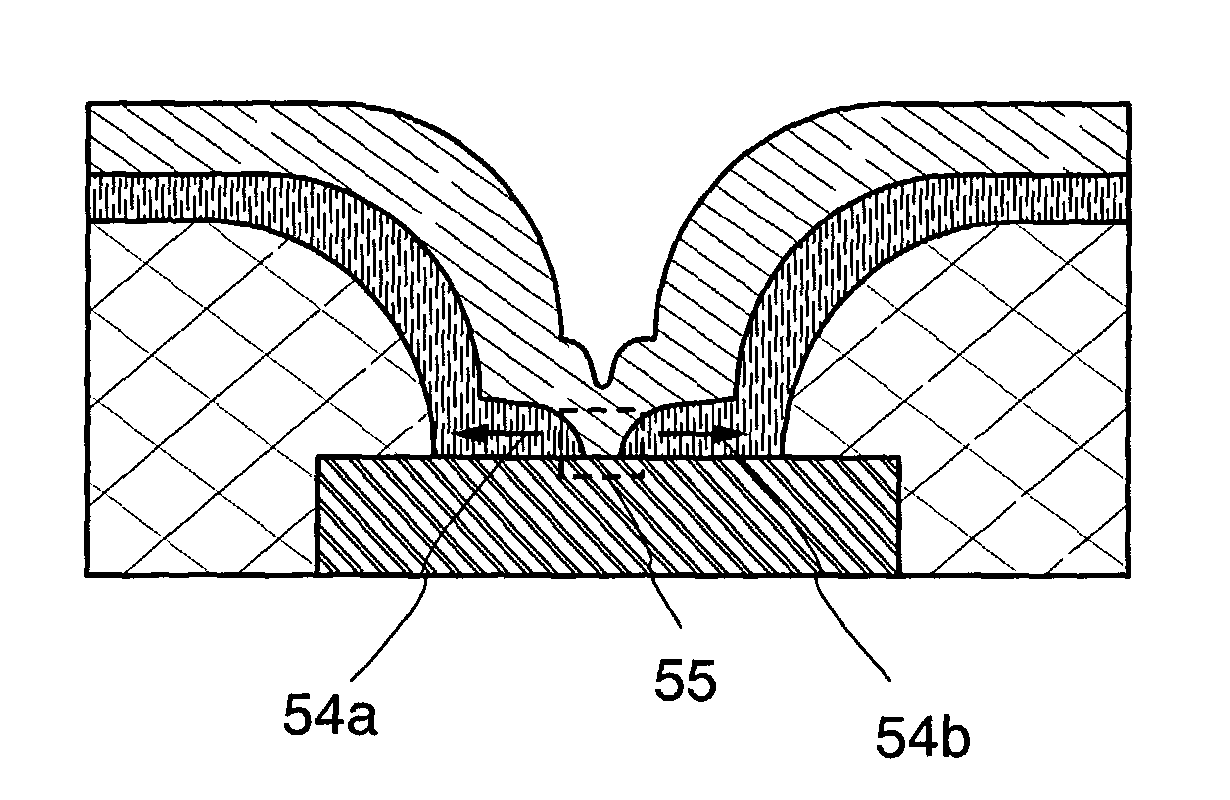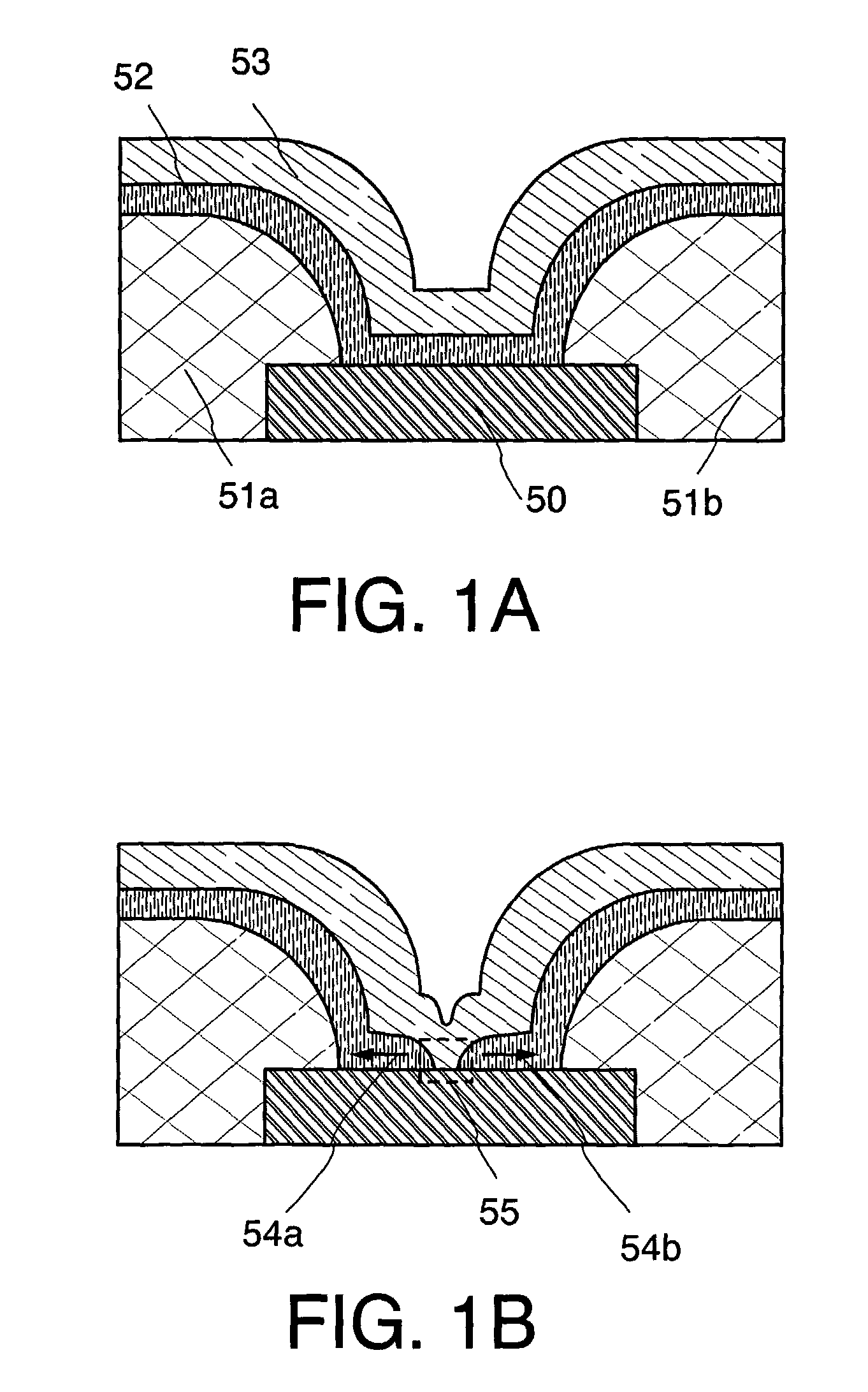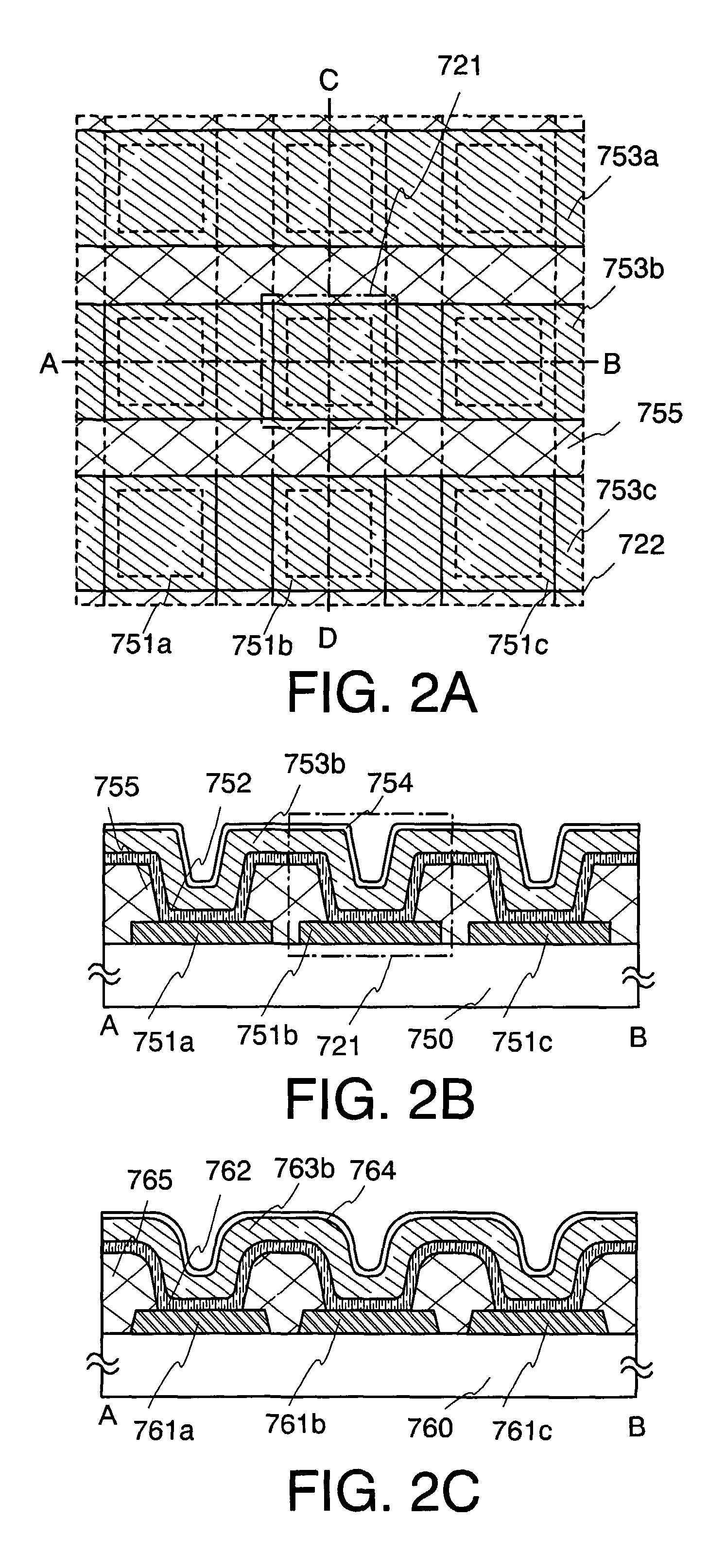Semiconductor device with liquid repellant layer
a technology of liquid repellant layer and semiconductor device, which is applied in the direction of solid-state device, basic electric element, thermoelectric device, etc., can solve the problems of rising writing voltage and not flowing current easily, and achieve the effect of low writing voltage and low cos
- Summary
- Abstract
- Description
- Claims
- Application Information
AI Technical Summary
Benefits of technology
Problems solved by technology
Method used
Image
Examples
embodiment mode 1
[0036]In this embodiment mode, one example of a structure of a memory element included in a memory device of the present invention will be described with reference to drawings. More specifically, a case where the structure of a memory device is a passive matrix type will be described.
[0037]A memory element of the present invention and an operation mechanism thereof will be described with reference to FIGS. 1A and 1B. In FIGS. 1A and 1B, a partition (insulating layer) 51a and a partition (insulating layer) 51b are provided so as to cover the end portions of a first conductive layer 50. The partitions (insulating layers) 51a and 51b also serve as partitions to separate a memory element from other memory elements. Then, an insulating layer 52 is formed over the partitions (insulating layers) 51a and 51b, and the first conductive layer 50. Furthermore, a second conductive layer 53 is formed over the insulating layer 52.
[0038]As materials for the first conductive layer 50 and the second ...
embodiment mode 2
[0097]In this embodiment mode, a memory device having a structure different from that of the above embodiment mode 1 is described. Specifically, a case where the structure of a memory device is an active matrix type is described.
[0098]FIG. 5 shows an example of a structure of the memory device that is described in this embodiment mode, which includes a memory cell array 232 in which memory cells 231 are provided in a matrix form; a bit line driving circuit 226 that has a column decoder 226a, a readout circuit 226b, and a selector 226c; a word line driving circuit 224 that has a row decoder 224a and a level shifter 224b; and an interface 223 which carries out interactions with the exterior and has a writing circuit and the like. Note that the structure of a memory device 216 shown here is only one example, and it may include another circuit such as a sense amplifier, an output circuit, or a buffer, and the writing circuit may be provided in the bit line driving circuit.
[0099]A single...
embodiment mode 3
[0115]In this embodiment mode, one example of a semiconductor device having the memory device shown in the above mentioned embodiment mode, will be described with reference to drawings.
[0116]A characteristic of the semiconductor device shown in this embodiment mode is that data readout and writing are possible without contact. Data transmission methods are classified broadly into three, and any of the following may be used: an electromagnetic coupling method of communicating by mutual induction with a pair of coils placed opposite of each other; an electromagnetic induction method of communicating by an inductive electromagnetic field; or an electric wave method of communicating by using electric waves. Also, an antenna that is used for transmitting data can be provided in two ways. One way is to provide the antenna over a substrate over which a plurality of elements and memory elements are formed; and the other way is to provide a terminal portion for a substrate over which a plura...
PUM
 Login to View More
Login to View More Abstract
Description
Claims
Application Information
 Login to View More
Login to View More - R&D
- Intellectual Property
- Life Sciences
- Materials
- Tech Scout
- Unparalleled Data Quality
- Higher Quality Content
- 60% Fewer Hallucinations
Browse by: Latest US Patents, China's latest patents, Technical Efficacy Thesaurus, Application Domain, Technology Topic, Popular Technical Reports.
© 2025 PatSnap. All rights reserved.Legal|Privacy policy|Modern Slavery Act Transparency Statement|Sitemap|About US| Contact US: help@patsnap.com



